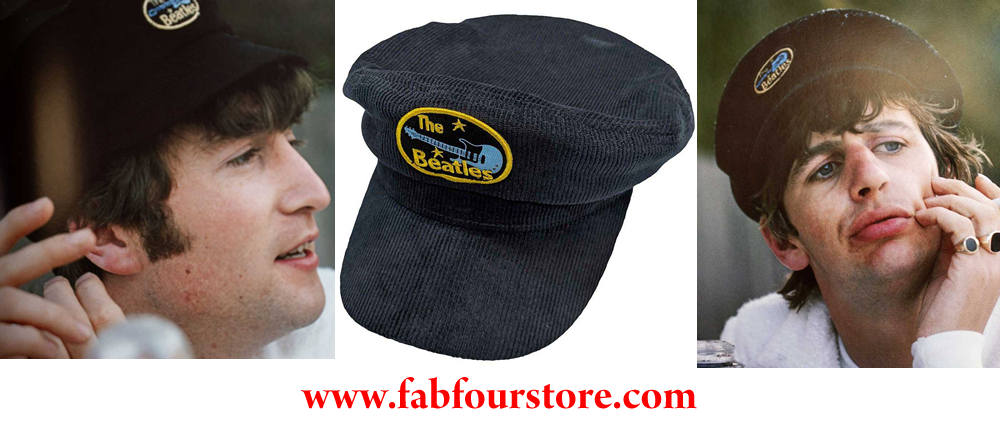- Register
- Log in to Tune-In
- Wishlist (0)
-
Shopping cart
(0)
You have no items in your shopping cart.

At 92, Yoko Ono is finally finding an unlikely wave of support from Beatles fans who once blamed her for splitting up the band, with many now pointing to her lifelong pain over her abducted daughter as the reason they finally understand – and forgive – her.
OK! can reveal the renewed empathy follows the release of the HBO Max documentary One to One: John & Yoko, which revisits the 1971 abduction of Ono's daughter, Kyoko, now 61, by her former husband Anthony Cox and the decades-long search that consumed Ono and John Lennon over the "lost" girl.
The film, anchored around Lennon's 1972 benefit concert at Madison Square Garden, also reveals the emotional toll Kyoko's absence took on Ono's art, her public persona and – according to newly vocal Beatles fans – her treatment in pop history.
Much of the surge in sympathy stems from viewers who say the documentary reframes Ono's grief.
One longtime Beatles enthusiast said: "I think people underestimated just how much weight Yoko she was carrying. You can now see the pain of a mother who lost her child, and suddenly the jokes about her breaking up the band feel cruel. The revelations about Yoko's pain as a mom has changed the wa details

For as much as karma can work in mysterious ways, it can also be glaringly obvious, which seemed to be the case for Paul McCartney when he had to field “awful” jokes about his wife, Linda McCartney, joining Wings. The band was McCartney’s first ensemble endeavor post-Beatles, the latter of which was famously overshadowed by a passive-aggressive feud between Yoko Ono and every member of the Fab Four besides John Lennon.
The theory that McCartney was looking directly at Ono while he sang “Get Back” in the studio (specifically, “Get back to where you once belonged”) was a manifestation of this divide. Years later, McCartney discussed this contentious time in Beatles history during an appearance on The Howard Stern Show. “Those were very paranoid times, you know,” the ex-Beatle said.
“And let’s face it, we didn’t welcome Yoko in the studio. I thought it was a guy thing. Even the guys’ wives and the girlfriends and stuff weren’t really welcome in the studio. Control room for a quick visit. But actually sit in the studio with us? It was like, ‘Uh, no. Excuse me? We’re working.’”
Not long after the infamo details

Many Beatles fans through the years have made a hobby out of picking apart the Fab Four’s lyrics to find some hidden message or meanings. That was commonplace when the band was still together. In fact, John Lennon even wrote “I Am The Walrus” to mess with listeners who were assigning way too much meaning to their songs. Still, The Beatles recorded many songs with hidden meanings that flew over the heads of many listeners back in the day. Let’s look at a few Beatles tunes with fascinating, deeper meanings that you might have missed.
“Got To Get You Into My Life”
Fans go back and forth on how drug-influenced or drug-referential certain songs from The Beatles are. “Got To Get You Into My Life” is one song that has been confirmed by Paul McCartney to be about p*t.
“[We] were on tour, so we were all together in the hotel suite,” said McCartney of the inspiration for the song. “We were having a drink, and then Bob [Dylan] arrived and disappeared into a backroom. Then Ringo went back to see him and after a couple of minutes Ringo came back into the suite looking a little dazed and confused. And we said, ‘What’s up?’ and he said, details

Ringo Starr’s most notable endeavor post-Beatles is his creation and career with his band, Ringo Starr & His All-Star Band. Founded in 1989 and still going strong to this day, Ringo Starr & His All-Star Band always includes Ringo, of course, as well as some of the finest rock ‘n’ roll musicians of all time. Minus the core members, Gregg Bissonette, Steve Lukather, and Colin Hay, a few of the musicians who have been a part of the group include Joe Walsh, Billy Preston, Levon Helm, Jeff Lynne, Todd Rundgren, and many more. One musician who had an invitation to join the band but never did was Starr’s old pal and bandmate, George Harrison.
Following the breakup of The Beatles, George Harrison went on to have an incredibly successful solo career. Arguably, the best solo career of a Beatle. Prior to his passing, George Harrison scored three No. 1 hits, two No. 1 albums, and several Top 10 songs and albums. Needless to say, Harrison was a hot commodity, and that is seemingly why he never joined Ringo Starr & His All-Star Band.
George Harrison Jokingly Stated That He Was Too Expensive
Per the list we just gave you, Ringo Starr didn’t toss invitations out willy-nilly. He cho details
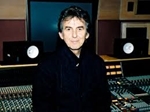
Before George Harrison's death at 58, the Beatles’ lead guitarist delivered one final hit that carried deep personal meaning. In 2001, Harrison recorded the only song he's ever developed with his son, Dhani Harrison.
In his music career, Harrison had previously written a song in honor of his song after his birth in 1978. The song "Unknown Delight" was released on his 1982 album Gone Troppo. It took almost 20 years before Harrison could record a song with his son, and it unknowingly became his last.
The song "Horse to the Water" was recorded by Harrison on guitar and on lead vocals, while his son also played guitar. Instead of the song being released as their own, it became part of the 2001 album Small World, Big Band. It was performed by Jools Holland’s Rhythm and Blues Orchestra and Friends.
According to American Songwriter, Harrison and his son's parts were sent out to Holland in London, where his band finished the rest. All the while, Harrison sang the track while battling throat cancer.
"Horse in the Water" was recorded in early October 2001, with Harrison having died almost two months later on November 29, 2001. The song was later released shortly after his death in December.
details
Liverpool's most notable quartet has no shortage of famous admirers. The English music industry would be unrecognizable without The Beatles, the band that helped lay the foundations for modern music. Whether it's the penmanship of John Lennon and Paul McCartney, paired with the musical sensibilities of George Harrison and Ringo Starr, the group pushed the limits of pop-rock, psychedelia, and even Indian music across their seven key albums. Although generations of musicians would embrace the band's spirit of innovation, a certain early fan took one of their songs for a spin. In fact, this song by The Beatles achieved even greater fame thanks to the reinterpretation of this fellow English singer. The Beatles Wrote It but Joe Cocker Turned It into a Bluesy Masterpiece
One notable fan of Sgt. Pepper's is none other than rocker Joe Cocker — specifically the track "With a Little Help from My Friends." A year after Sgt. Pepper's release, Cocker recorded the song for his debut album of the same name. The cover is unlike anything performed by The Beatles, which originally features drummer Starr on the vocals and was written as a light, peppy pop-rock tune with a simple 4/4 time signature. Cocker went the opposit details

In 1980, Frank Veteran was a resident in surgery at Roosevelt Hospital on New York City’s west side. At 30 years old, he was in his fifth and final year of surgical training Between the pressures of medical school and his job, he’d had little time to keep up with current events, let alone the comings and goings of his childhood heroes.
“I was into the Beatles, and I followed them,” Veteran told me when we spoke in 2005 for a Guitar World Presents special issue. “But by the time I was the chief resident in surgery, I wasn’t listening to them anymore. I was too busy. I didn’t even realize John Lennon was living in New York.”
One of three chief residents at Roosevelt, Veteran was on call for emergencies every third night. There, he attended to the routine injuries of city life.
“Gunshot wounds, stab wounds. You wouldn’t have to be in the hospital all the time, but if anything happened, you’d have to come in and take one of the younger residents through the procedure,” he explained. “When you were chief resident, you were the primary head doctor. You ran the whole show.”
On the night of December 8, 1980, the show was details
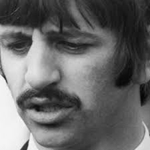
In the experimental, psychedelic operetta that was The Beatles’ 1967 album, Sgt. Pepper’s Lonely Hearts Club Band, drummer Ringo Starr got to don the role of Billy Shears, singer of the affable, tongue-in-cheek second track, “With a Little Help from My Friends”. (Shears was a subtle reference to the man who allegedly replaced Paul McCartney in the infamous “Paul is dead” conspiracy.)
McCartney, along with John Lennon, wrote the song specifically for Starr. The track was a little dopey, which was both a friendly tease of their bandmate and, from a performance standpoint, a character that Starr could portray well. “We always liked to [write a song] for him. It had to be not too much like our style,” McCartney explained to Barry Miles in Many Years From Now. “I think that was probably the best of the songs we wrote for Ringo, actually.”
Starr had no qualms taking up the mantle for novelty songs like “With a Little Help from My Friends”, “Yellow Submarine” the previous year, or “Octopus’s Garden” two years later. But there was one lyric from the Sgt. Pepper’s Lonely Hearts Club Band track that he refused to si details
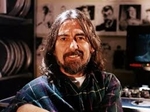
George Harrison fought a long and hard battle against cancer, but his full autopsy report is still a mystery 24 years later.
Harrison battled several different forms of cancer and sought treatment all over the world before he died at the age of 58 on November 29, 2001. Those who were present during his death said he left his body in the spiritual way he'd been practicing for decades. After the tragic event, which left Paul McCartney and Ringo Starr the last surviving Beatles, his loved ones gave him a send-off he would've loved.
However, more than two decades later, some mysteries still surround Harrison's death. His autopsy report was never released, and there were issues with the place of death that was initially added to his death certificate.
In 1997, after Harrison discovered a lump in his throat, doctors diagnosed him with throat cancer. They successfully removed the lump and Harrison underwent two radiation treatments at the Royal Marsden Hospital in London, one of the U.K.'s leading cancer centers, per Rolling Stone.
Harrison played down his illness by saying, "I am very lucky. I'm not going to die on you folks just yet." However, not long after becoming cancer-free, Harrison almost died details

Sir Paul McCartney is locked in a battle with the European Union over its plans to ban the use of the words 'sausage' or 'burger' to describe plant-based products.
The Beatles legend's late wife Linda, who died of breast cancer in 1998, was a vocal vegetarian and launched her own best-selling chain of meat-free alternatives in 1991. However, her business's right to continue describing its products as vegetarian burgers and sausages is now under threat.
The EU could make a decision as early as Wednesday over whether the use of the two words will be outlawed if a food is plant-based.
Mr McCartney, 83, and other members of Linda's family have joined the campaign protesting against the move. He told The Sunday Times: 'To stipulate that burgers and sausages are "plant-based", "vegetarian" or "vegan" should be enough for sensible people to understand what they are eating.
'This also encourages attitudes essential to our health and that of the planet.' A group of cross-party MPs, including Jeremy Corbyn, have also called for the proposed ban to be scrapped in a letter written to the European commissioners.
Linda McCartney launches her range of vegetarian food in 1991. P details

The Beatles drummer opened up about the devastating phone call he received in December 1980 while in Barbados and how he reacted to the news of John Lennon having been shot
It's been 45 years since a fan fatally shot John Lennon outside his New York home, and fans are just now looking back on the moment Ringo Starr opened up about finding out about the shooting for the first time.
John Lennon was shot on December 8, 1980, in the entrance of his Manhattan residence, with the Beatles legend declared dead upon arrival at hospital after being rushed there in a police vehicle. The musician was leaving his home alongside wife Yoko Ono when gunman Mark David Chapman seized his chance to attack the star, later citing Lennon's controversial remark about the Beatles being 'more popular than Jesus' as his primary motive. Chapman received a life sentence and continues to serve his time behind bars to this day.
The assassination sent shockwaves across the globe, particularly affecting his former Beatles bandmates, who have subsequently spoken openly about losing their dear friend.
During a 1981 interview with Barbara Walters, Ringo Starr recalled the devastating moment he learnt of John's sh details

No catalog has ever been as exhaustively analyzed as The Beatles’ output of albums. And yet, even within the relatively small batch of albums that they released, some LPs have failed to receive the attention they deserve.
These three Beatles albums will rarely be named among the group’s finest efforts. We explore the reasons why below. And we also explain why you should check them out if you’ve been holding back till now.
‘With The Beatles’ (1963)
The Beatles’ UK debut Please Please Me features a fantastic track listing. It also owns the great story about it being recorded, for the most part, in a single night. By contrast, With The Beatles couldn’t possibly have garnered that same kind of attention. But don’t think for a moment that the group was enduring some kind of sophomore slump with this release in 1963. If anything, it displayed just how quickly they were progressing as writers and musicians. Songs like “It Won’t Be Long” and “All My Loving” pushed all the pleasure buttons like the early hit singles. The group also once again flexed their muscles on cover material, as on their searing take on the Motown staple “Money details
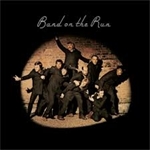
On This Day, Dec. 5, 1974…
Paul McCartney and Wings released their third album, Band on the Run, which became a huge hit and remains McCartney’s most successful non-Beatles album.
The album produced two hits, the title track and “Jet,” and went to #1 in the U.S. and the U.K.
The cover featured McCartney, his wife Linda and guitarist Denny Laine posing as escaped convicts alongside actors James Coburn and Christopher Lee, British boxer John Conteh, U.K. broadcasters Michael Parkinson and Clement Freud, and English entertainer Kenny Lynch.
To celebrate the anniversary, McCartney released a special 50th anniversary edition of the album in February 2024.
McCartney’s post-Beatles career with Wings is also the subject of a new documentary, Man on the Run, premiering globally on Prime Video on Feb. 25, 2026.
Source: Everett Post
details
The childhood home of George Harrison of The Beatles is now open to visitors for the first time ever through scheduled guided tours.
Located at 25 Upton Green in Speke, the family home of George Harrison played a formative role in the ‘quiet’ Beatle’s early life and musical development, serving not only as his family residence from 1950 to 1962 but also as an early rehearsal space for The Beatles in the years before Beatlemania.
The experience has been developed and will be delivered by Dale Roberts, tour guide and co-owner of the property, who has spent over a decade sharing Beatles history with visitors from around the world. He became co-owner of the Harrison family home a year ago, after Ken Lambert asked him to come on board as an owner. Ken won the house at auction in 2022 in a well-publicised purchase of the property, Ken would turn into an Air BnB for guests to stay in.
“George’s story is a Liverpool story”
“This house is a reference point to a local Liverpool musician who would just so happen to be part of a phenomenon that changed the world. There has been huge interest globally in where The Beatles came from, and 25 Upton Green has always felt details

The Beatles are back on the Billboard charts thanks to Anthology 4, the new addition to the band’s Anthology series, which was recently reissued.
Anthology 4 features 36 tracks, including 13 previously unreleased demos, session recordings and more. It debuted in the top 10 on five Billboard charts, including both the Top Albums Sales and Top Current Album Sales charts, where it landed at #9.
The album is also at #7 on the Top Rock & Alternative Albums chart, #6 on the Top Rock Albums chart and #3 on the Indie Store Album Sales chart.
Anthology 4 was released as a standalone and was also part of the larger The Anthology Collection box set, with both debuting at #48 on the all-genre Billboard 200 chart. The Collection includes the first three Anthology releases, which originally came out in the '90s, and hit #1 on the Billboard 200 and the Top Album Sales chart.
The release of The Anthology Collection coincided with the Disney+ debut of the newly restored and remastered version of the Anthology documentary series, which aired on ABC in 1995. The new version was expanded from eight to nine episodes. A 25th anniversary edition of The Beatles Anthology book was also released in October.
details
The Beatles are famous for struggling to agree, but when it came to this one song Paul McCartney wrote for the Fab Four, three of them agreed unanimously about how much they hated the song. Nearly 60 years ago, the group released one of their most iconic albums, Abbey Road, and McCartney wrote one of their most forgotten hits, “Maxwell’s Silver Hammer”. However, the song and the sessions frustrated the group, and it is considered their worst song. Why Were the Beatles Members Frustrated With Paul McCartney and "Maxwell’s Silver Hammer"?
“Maxwell’s Silver Hammer” almost did not make it onto the album, as John Lennon, George Harrison, and Ringo Starr disliked the song due to the song’s complexity. McCartney first wrote the song in 1968 after the group’s trip to India, and it was intended for Let It Be. Even after the song was rejected, “Maxwell’s Silver Hammer” would soon find its way onto the Abbey Road album, but it almost destroyed the band.
As the songwriter, McCartney wanted the song to sound a certain way, but none of his bandmates were able to match his creative vision. This caused tension in the studio, as McCartney’s details
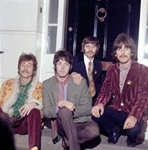
Two Beatles songs — "Real Love" and "I'll Get You" — return to multiple charts as the band's Anthology 4 and the Anthology Collection both debut inside the top 10. LONDON - MAY 19: English singer, songwriter and guitarist John Lennon (1940-1980), English singer, songwriter and bassist Paul McCartney, English musician, singer and drummer Ringo Starr and English musician, singer, songwriter and guitarist George Harrison (1943-2001) of the Beatles attend a press party at the home of manager Brian Epstein supporting the release of Sgt. Pepper's Lonely Hearts Club Band, May 19, 1967, in London, United Kingdom. (Photo by Jeff Hochberg/Getty Images)
The Beatles never have a completely quiet week on the charts, as people all around the world stream and buy the band’s music constantly. The group typically performs best in the United Kingdom, where all four musicians — John Lennon, Paul McCartney, George Harrison, and Ringo Starr — are originally from and where the outfit got its start.
As The Beatles score two new charting albums with both Anthology 4 and the larger, more all-encompassing The Anthology Collection, multiple tunes from the rockers find their way back to several different details

Sam Mendes has added eight to the cast of The Beatles — A Four-Film Cinematic Event, Sony announced on Thursday. They are David Morrissey (The Walking Dead), Leanne Best (Walk-In), James Norton (Happy Valley), Harry Lloyd (The Theory of Everything), Bobby Schofield (The Covenant), Daniel Hoffmann-Gill (Sherwood), Arthur Darvill (Broadchurch), and Adam Pally (Happy Endings).
Morrissey will play Paul McCartney’s father Jim McCartney, with Best as John Lennon’s Aunt Mimi, Norton as manager Brian Epstein, Lloyd as long-time music producer George Martin, Schofield as road manager and trusted confidant Neil Aspinall, Hoffmann-Gill as roadie Mal Evans, Darvill as press officer and friend Derek Taylor, and Pally as controversial music manager Allen Klein.
As previously announced, the films will star Paul Mescal as McCartney, Barry Keoghan as Ringo Starr, Joseph Quinn as George Harrison, and Harris Dickinson as John Lennon, with each telling the story of a different member of the band. Mia McKenna-Bruce, Saoirse Ronan, Anna Sawai, and Aimee Lou Wood also star in the respective roles of Maureen (Cox) Starkey, Linda (Eastman) McCartney, Yoko Ono, and Pattie Boyd.
We were first to report on the Bea details

As if four upcoming Beatles biopics aren’t enough, the BBC is ready to give fans more.
The network has picked up a new drama series, Hamburg Days, which will focus on The Beatles’ early days as a band. The six-part series, based on the autobiography by German artist and musician Klaus Voormann, is set in the ’60s when Voormann and photographer Astrid Kirchherr meet a young Liverpool rock band, who are playing in the clubs of Hamburg’s St. Pauli’s red-light district.
“Together, they help spark a transformation that turns a scrappy group of teenagers into the greatest music phenomenon the world has ever known: The Beatles,” reads the series description.
“Hamburg Days is the fascinating story of how, in the space of two short years, a raw young band from Liverpool honed their music skills in Hamburg, before returning home to become an overnight worldwide success,” says Sue Deeks, head of scripted pre-buy acquisitions at the BBC. “It is an incredible story, accompanied (of course) by an amazing soundtrack!”
Voormann will serve as a consultant on the series. Casting on the project has not yet been announced.
Source: ABC New details

Paul McCartney had reached the pinnacle of global fame with the Beatles by the end of the 1960s. What he did for the next decade, after the end of the band themselves a few months later, is captured in this hefty oral history.
Wings: The Story Of A Band On The Run pairs McCartney with historian Ted Widmer, who has dug into archives and been given access to material from Man On The Run, a McCartney documentary due out early next year. There are comments from McCartney himself, ex-Beatles, other Wings personnel, family members and further figures in the Wings orbit – these including Sean Ono Lennon, Chrissie Hynde and graphic designer Aubrey Powell.
We get the inside track on Wings’ entry into the Bond theme annals – 1973’s Live And Let Die, perhaps the greatest example of the form to this day – and their ascent to American stadium rock status. There are also plentiful off-the-wall moments, from an attempted mugging in Lagos to the time some gnarly punk rockers approached McCartney in London, only to lavish unlikely praise on Wings’ exceedingly non-punk Mull Of Kintyre, 1977’s Christmas number one. Albums like Band On The Run itself are thoroughly dissected, alongside a cu details
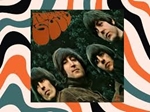
Exactly 60 years ago today, the Beatles released Rubber Soul, their sixth UK LP album.
Rubber Soul represented a sharp departure from the sound which had brought the group unprecedented worldwide success over the past three years. Even the atmospheric, autumnal cover portrait of the group hinted that what was on the record was going to be something new – more mature and introspective than what had come before. Rubber Soul ushered in the most intensely creative and experimental period of the Beatles’ career, which would continue to play out over the following two years.
Interestingly, this was only the second Beatles LP to completely eschew covers in favour of all-original material, following 1964’s A Hard Day’s Night. Although said by some – including producer George Martin – to be a pioneering example of a pop album being constructed as a cohesive whole rather than simply as a collection of songs, it did feature a few missteps, showing that the group were still in the early stages of honing this particular craft, which they would go on to perfect over their next two LPs, 1966’s Revolver and 1967’s Sgt. Pepper’s Lonely Hearts Club Band. Sonically, the group c details

Producer George Martin revealed the "traumatic" aspect of making The Beatles' Anthology in the new ninth episode of the project's docuseries.
Thirty years after the original eight-part docuseries aired, the newly restored and expanded Beatles Anthology, which now includes the ninth episode, premiered over three nights on Disney+, starting on November 26. The larger project, The Beatles Anthology 2025, also features a reissued and expanded version of the project's original three double-album Anthology records. Meanwhile, a book, originally released in 2000, has also been reissued.
Anthology Nine offers fans a behind-the-scenes glimpse into the reunion of the remaining Fab Four — George Harrison, Paul McCartney, and Ringo Starr — and Martin, often referred to as the Fifth Beatle, who came together in the mid-1990s to create the project. While some have called the episod details

Paul McCartney‘s career endured into the music video era, but in the early years of the Beatles and his solo career, visual elements weren’t commonplace. Because of this, many McCartney songs are video-less. Below, find three McCartney songs, from the Beatles’ tenure or otherwise, that would’ve made killer music videos. McCartney should go back and give these songs their moment on screen.
Starting with a Beatles cut, “Yesterday” would be a strong contender for a music video. Though simple, this Beatles hit is narrative enough to lend itself well to visual storytelling. Moreover, the song’s emotionality has the perfect amount of melodrama for McCartney to flex his acting chops, if he had wanted to.
Because this song was released well before the ’80s music video craze, it never got its time to shine in this way. If we could move McCartney to make any visual retroactively, it would be this one.
“Jet”
“Jet” is one of McCartney’s most anthemic songs to date. The punchy, bright musicality of this song begs for a visual just as striking. There are aviation angles, ’70s glam angles, classic rock angles, and many more lenses details

When Rubber Soul arrived in the UK on 3 December 1965, The Beatles stepped into a new phase of their creative lives, a phase that would soon define the sound and ambition of popular music. The sixth studio album from John Lennon, Paul McCartney, George Harrison and Ringo Starr landed during a frantic period in their global rise, yet the work itself came from a rare four-week window where the group were free of touring, filming and radio commitments, a gift they had never been offered before.
Recorded in London across October and November 1965, the album represented a shift away from Beatlemania’s high-volume demands, with the band focusing on the studio as a place of exploration. For the first time they had the space to work as recording artists rather than performers, a change that altered the direction of their career and the wider rock landscape.
Often described as a folk rock record, Rubber Soul grew from a mix of influences that the group absorbed during their August 1965 North American tour. They had played to more than 55,000 people at Shea Stadium, met Bob Dylan in New York and visited Elvis Presley in Los Angeles, events that broadened their sense of possibility. American radio during that trip in details

While it’s undeniable that the team of Lennon/McCartney produced some of the world’s most cherished hits, at least one of these gents was not a total fan. And he made no bones about going public with his opinions. Perhaps unsurprisingly, the naysaying Beatle in question was John Lennon.
While John and Paul teamed up brilliantly, John carried an albatross of perfectionism placed on himself. It made his artistic calling disproportionately difficult. This is, after all, the man with one of the most distinctive rock voices who hated hearing his self-described “thin, nasal” tones because they so differed from what he heard in his head.
As a general observation, it’s safe to say that Paul McCartney gravitated towards a more mainstream pop vibe than Lennon, who leaned into an experimental and often surreal approach. Paul had a fondness for old-timey music and rippling keyboards; John preferred more dissonance.
In the post-Beatles years, John came clean with some of his true feelings. His opinions are as enlightening as they are confounding. Here’s a partial list of Beatles standards that weren’t up to John’s exacting standards.
“Run for Your Life”
details




